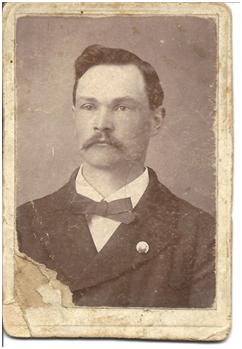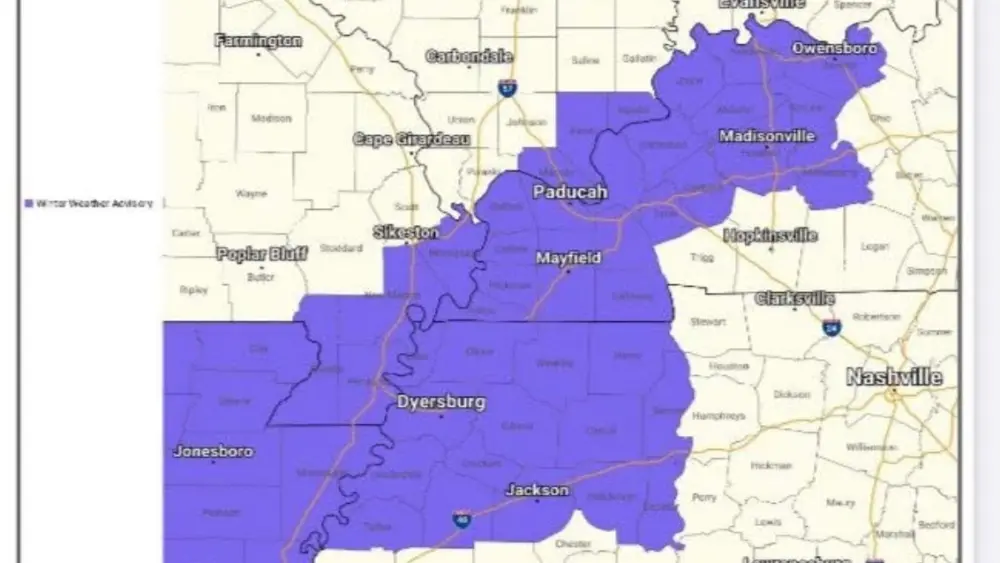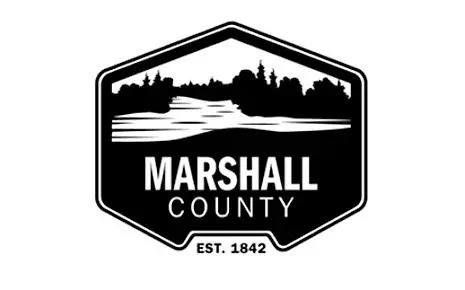The Murder of Daisy Sullivan
 Above: Noah Franklin
Above: Noah Franklin
On the evening of October 31, 1896, seventeen year old Daisy Sullivan was spending a quiet evening on the front porch of her parent’s home. Before turning in for the night, Daisy went to the breezeway of the home to water flowers. As she crossed through the breezeway near the front door, a shot rang out and Daisy fell to the floor. In terror, Daisy’s father crouched in the floor to avoid being seen in the window and waited a few seconds before he went to check on Daisy. Once he made it to the breezeway of the home, J.M. Sullivan found his daughter lying in a pool of her own blood. He tried to revive Daisy, but it was too late as she was killed instantly. Shortly after, J.M Sullivan’s two sons returned from hunting and were instructed by their father to get help. Word was immediately sent to Sheriff Joseph H. Little in Benton that Daisy Sullivan had been murdered.
The previous year had been a difficult one for the Sullivan family as Daisy had become pregnant out of wedlock. When Sheriff Little arrived at the murder scene, J.M. Sullivan told him Daisy had been involved with Noah Franklin and the relationship had grown contentious when Noah Franklin had refused to marry her. “I know he killed her,” Sullivan told Sheriff Little. After investigating and questioning neighbors, Sheriff Little went to home of Noah Franklin, who lived only a few miles from the Sullivan family. After a line of questioning, the sheriff placed Franklin under arrest for the murder of Daisy Sullivan.
The next day, Franklin was brought before County Judge John J. Dupriest where it was concluded that there was not enough evidence to convict Franklin for the murder of Daisy Sullivan. A few weeks after the trial, County Judge Dupriest called the Fiscal Court into special session for the purpose of offering a three hundred dollar reward for the capture of Daisy’s murderer.
In late November 1896, Private Detective W.A. Wickliffe of Louisville arrived in Marshall County to find justice for Daisy. Wickliffe began questioning citizens of Briensburg and he spent a great deal of time at the Sullivan home investigating the crime scene. On February 11, 1897, Sheriff Little along with Detective Wickliffe arrested Noah Franklin and once again charged him with the murder of Daisy Sullivan. Detective Wickliffe told the Benton Tribune the murder weapon was thrown into a pond on the Sullivan property. Officials began draining the pond to find the murder weapon, but no gun was ever found.
Once arriving at the Marshall County Courthouse, Noah Franklin waived his examining trial and was lodged in the Marshall County Jail to await action from the Grand Jury. After hearing hundreds of witnesses, the Grand Jury in Marshall County indicted Noah Franklin on March 9, 1897 for the murder and the trial was set for the following June. Franklin was held in jail without bond.
On the first day of the June term of the Circuit Court, a crowd gathered in the courtroom at the courthouse to watch the trial. Once the trial began, Commonwealth Attorney W.F. Bradshaw asked Circuit Judge William Bishop for a continuance citing the hot weather and the need for the jury, who were all farmers, to tend to their crops in their fields. Judge Bishop agreed and the continuance was granted and the trial was postponed for the October term of the Circuit Court. The defense argued that Noah Franklin had a right to a speedy trial, but Judge Bishop upheld his ruling.
The next day, the Paducah Daily Sun published an editorial condemning the decision made by Judge Bishop. The editorial stated that Franklin was innocent and that the media and a certain ambitious detective, W.A. Wickliffe, were trying to make a sensational case against Franklin. The editorial went on to slam prosecutors by stating that the continuance was requested so the Commonwealth would have more time gathering evidence that they did not have against Franklin. Many of the readers in Marshall County agreed and Judge Bishop received a great deal of backlash from his decision. Two months before the trial was to begin, Judge William Bishop was up for re-election in the August Democratic Primary. He was being challenged by Paducah attorney L.D. Husbands who made an issue out of the continuance controversy of the Noah Franklin trial. Husbands argued that a continuance should not have been granted by Judge Bishop and that the trial should have proceeded in the June term of the Circuit Court. A majority agreed with Husbands and on election night, L.D. Husbands defeated Judge Bishop by 147 votes.
When the trial finally began in October, several witnesses were brought before the jury and the star witness for the Commonwealth was a local merchant who owned a general store in Briensburg who testified that Noah Franklin had purchased buckshot the day of the killing. Franklin’s lawyers countered that the he purchased the buckshot to go squirrel hunting and that nearly every household in the county had buckshot thus the Commonwealth could not prosecute on the possession of buckshot alone. The defense also argued that a conviction could be made because there was no murder weapon found or any witnesses who can testify that they saw Franklin kill Daisy Sullivan.
On the afternoon of Saturday, October 16, 1897 as the jury went into the jury room to reach their verdict, Noah Franklin anxiously awaited his fate. Minutes began to turn into hours, and by midnight, the jury had not reached a verdict. Attorneys for Noah Franklin requested that the jury be disbanded since the term of the Circuit Court had expired at midnight. Judge Bishop angrily disagreed and overruled the motion. Judge Bishop then entered an order extending the term of the Circuit Court until the jury reached a verdict. The jury was allowed to retire until 9am the following morning.
The jury returned on Sunday morning, October 17, 1897 to continue deliberating the fate of Noah Franklin. At midnight a verdict had still not been reached and Judge Bishop ordered the jury to return the next day. At 2:55pm on Monday, October 18, the jury finally reached its verdict after twenty one hours of deliberation. Judge Bishop read the verdict and handed the slip of paper back to the jury foreman. “In the charge of willful murder of Daisy Sullivan, how do you find the defendant Noah Franklin?” asked Judge Bishop. “We find the defendant Mr. Franklin—– GUILTY.” At the request of the jury, Judge Bishop sentenced Franklin to life imprisonment instead of death by hanging. Franklin’s attorneys immediately asked Judge Bishop to set aside the judgment until the next term of the court so they could make an appeal. Judge Bishop granted their motion and ordered that Noah Franklin be held in the Marshall County Jail until the start of the March 1898 term of the Circuit Court.
After being found guilty, Noah Franklin’s attorney William Reed filed a motion before the Kentucky Court of Appeals for a new trial on the grounds that one of the jurors, Anderson Holland, was impartial and had expressed an opinion in the case prior to the trial. While waiting for the Court of Appeals to decide if they would hear the case, Detective Wickliffe who secured the evidence which led to the arrest of Noah Franklin, went before the Marshall County Fiscal Court in May 1898 to collect the three hundred dollar reward that was offered. County Judge John Dupriest refused to grant Wickliffe the reward money until the Court of Appeals made a decision in the case. Angry, Wickliffe threatened a lawsuit against the county because he felt that the specifications of the reward money had been carried out. Judge Dupriest told Wickliffe a lawsuit was not necessary, but that Wickliffe would have to wait for the Court of Appeals to act. Later that month, the Kentucky Court of Appeals agreed to hear the case and ruled in favor of Noah Franklin and ordered a new trial.
The second trial against Noah Franklin began in June of 1898 and trouble was expected from the beginning. Newly elected sheriff L.E. Wallace swore in extra deputies to contain order and to thwart any possible violence. During this trial, the defense offered to provide evidence that Noah Franklin’s shotgun could not have been the murder weapon. Reed argued that the wound that killed Daisy Sullivan was from horse pistol and that the only gun Franklin owned was a shot gun. However, Judge Husbands refused to allow it into testimony. The defense also tried to prove that one of the Commonwealth’s chief witnesses, Ed Howard, had been intimate with Daisy Sullivan and was suspected to be the father of her unborn child. The defense argued Daisy had been seeing Noah Franklin and Ed Howard at the same time and had ended the relationship with Ed Howard shortly before her death. The breakup had angered Howard and the defense argued this was motive for him to kill Daisy Sullivan. Reed also told the jury that Ed Howard owned a horse pistol. The prosecution objected to the testimony on the grounds that it was all pure speculation and Judge Husbands instructed to jury to ignore the testimony. After only a few days of testimony, the case was handed over to the jury which quickly returned a guilty verdict. Judge L.D. Husbands sentenced Franklin to life imprisonment and gave him sixty days to appeal. Franklin’s attorneys immediately expressed their interest in once again appealing to the Kentucky Court of Appeals.
While waiting for the case to go before the Court of Appeals, there was talk all over Benton of lynching Franklin and extra security was ordered at the Marshall County Jail. In late September 1899, tools and dynamite was found behind the jail and an apparent plot was foiled to break Noah Franklin out jail. It was not known it the perpetrators were trying to free Franklin or to lynch him.
In October, 1899, defense attorney William Reed visited Frankfort and received word that the Kentucky Court of Appeals would hear the Franklin case once again. At the hearing with the Court of Appeals, Reed argued that Noah Franklin should have been allowed to enter testimony that his shotgun could not have made the wound that killed Daisy Sullivan and that the Commonwealth’s witness, Ed Howard, was not a creditable witness. In January 1899, the Kentucky Court of Appeals reversed the decision of Judge Husbands and a new trial was set.
The new trial was set for September 1899. However it became very difficult to seat an impartial jury due to the notoriety of the trial. Finally on September 28, 1899 a jury was selected and the trial was slated to begin in October. After hearing only a few days of testimony, including testimony that Noah Franklin’s gun was not the murder weapon, the case was once again handed over the jury. On October 17, 1899, the jury found Noah Franklin not guilty in the murder of Daisy Sullivan. After three trials and two appeals, Noah Franklin was acquitted of the murder.
After the verdict was read, Noah Franklin made his way back to his home in Briensburg for the first time in three years. Not long after returning home, Noah Franklin received a threatening note telling him to “leave the country or face harsh consequences.” Franklin found life to be very difficult in the Briensburg community and he eventually moved to Bennett, Arkansas where he lived until his death in 1955.






